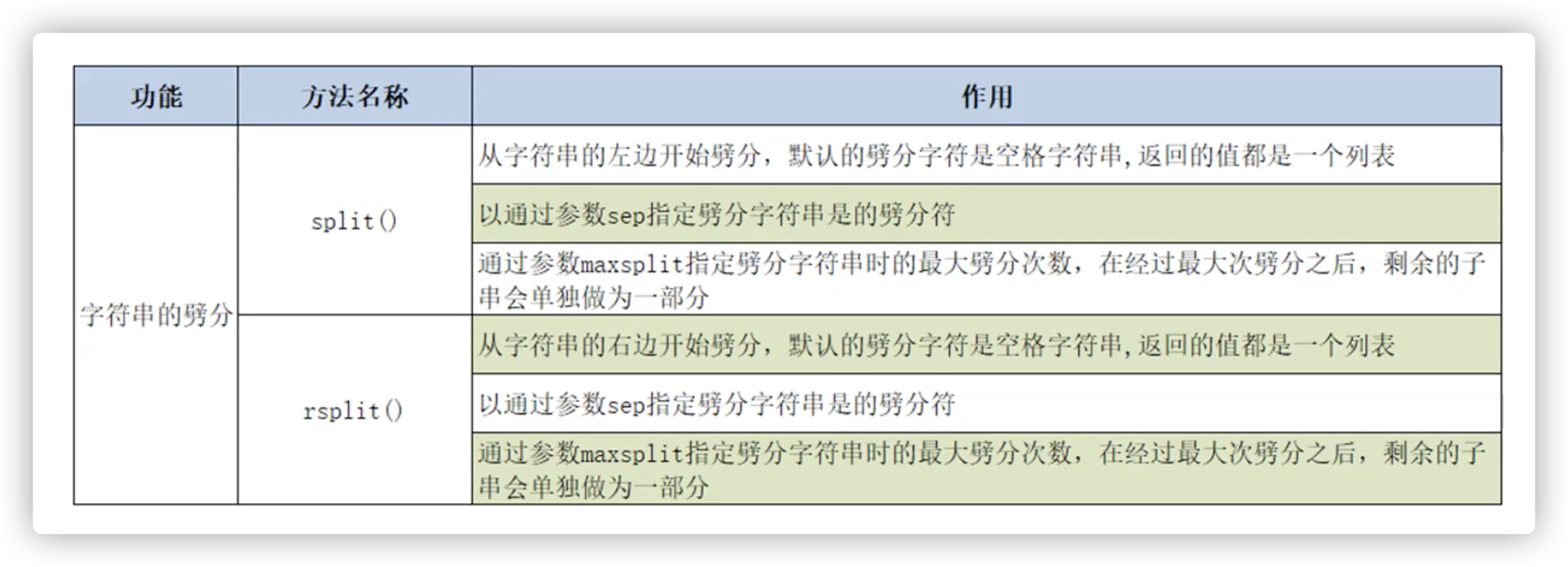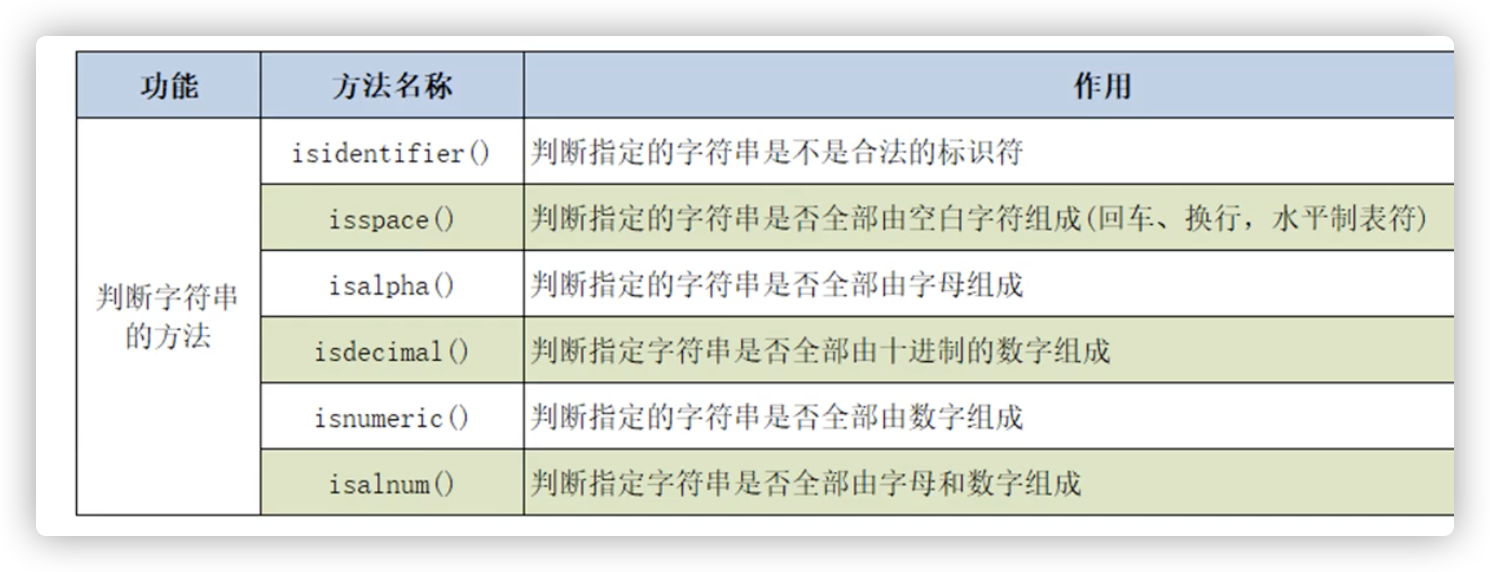Python学习第八天
字符串
是Python中的基本数据类型,是不可变序列。


字符串的查询

index()方法
可以设置start和end,范围是[start,end)
查找子串第一次出现的位置,若不存在,抛出ValueError。
s = "hello world!"
p1 = s.index('llo')
print(p1)
p2 = s.index('la')
print(p2)
####
2
Traceback (most recent call last):
p2 = s.index('la')
ValueError: substring not found
rindex()方法
查找子串最后一次出现的位置,若不存在,抛出ValueError
s = "hello world!"
p1 = s.rindex('l')
print(p1)
p2 = s.rindex('la')
print(p2)
####
Traceback (most recent call last):
p2 = s.rindex('la')
ValueError: substring not found
9
find()方法
查找子串第一次出现的位置,若不存在,返回-1
s = "hello world!"
p1 = s.find('l')
print(p1)
p2 = s.find('la')
print(p2)
####
2
-1
rfind()方法
查找子串最后一次出现的位置,若不存在,返回-1
s = "hello world!"
p1 = s.rfind('l')
print(p1)
p2 = s.rfind('la')
print(p2)
####
9
-1
大小写转换
不改变原字符串。

upper()方法
把所有字符转换成大写。
s = 'hello'
print(s.upper())
####
HELLO
lower()方法
把所有字符转换成小写。
s = 'hello'
print(s.upper().lower())
####
hello
swapcase()方法
把大写字符转成小写字符,小写字符转换成大写字符。
s = 'heLLoHi'
print(s.swapcase())
####
HEllOhI
capitalize()方法
把第一个字符转换成大写,其他字符都是小写。
s = 'heLLoHi'
print(s.capitalize())
####
Hellohi
title()方法
每个单词的首字符大写,其他小写。
s = 'heLLoHi wORLd'
print(s.title())
####
Hellohi World
字符串内容对齐

字符串的分割

s = 'I like cpp'
l = s.split()
print(l)
####
['I', 'like', 'cpp']
判断字符串

字符串的替换

s = 'I like cpp'
ns = s.replace("like", 'fuck')
print(ns)
####
I fuck cpp
字符串的合并

l = ['hello', 'cpp', 'java']
print(','.join(l))
t = ('hello', 'python', 'vb')
print(''.join(t))
print('@'.join('Python'))
####
hello,cpp,java
hellopythonvb
P@y@t@h@o@n


